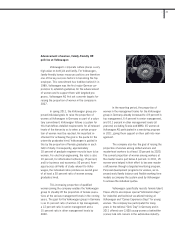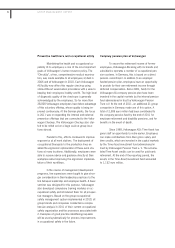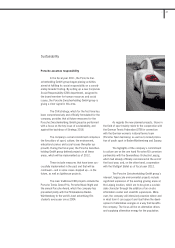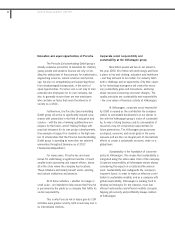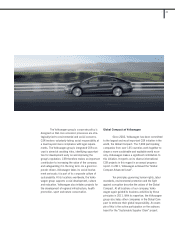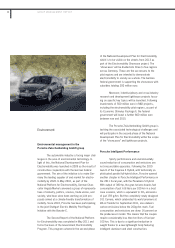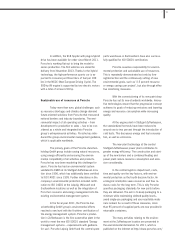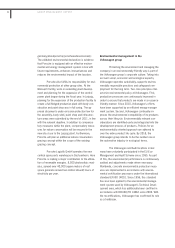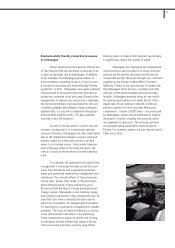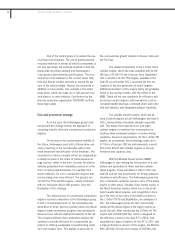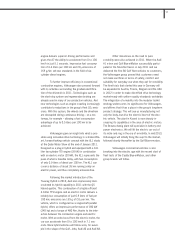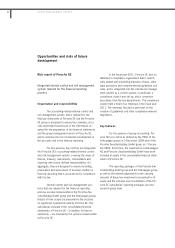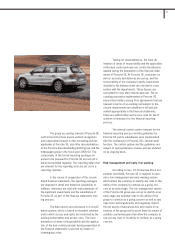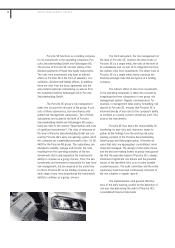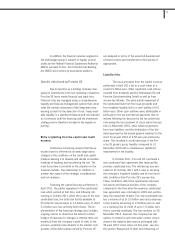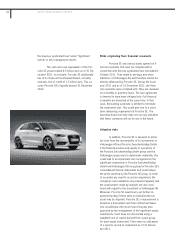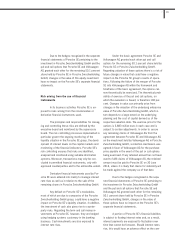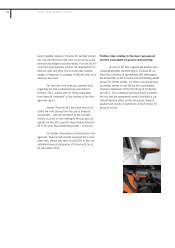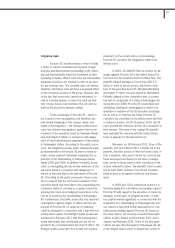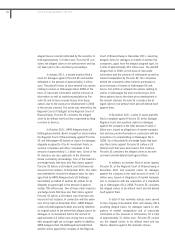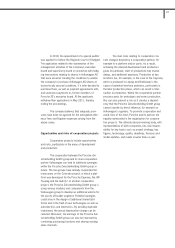Porsche 2011 Annual Report Download - page 95
Download and view the complete annual report
Please find page 95 of the 2011 Porsche annual report below. You can navigate through the pages in the report by either clicking on the pages listed below, or by using the keyword search tool below to find specific information within the annual report.
engine delivers superior driving performance and
gives the A7 the ability to accelerate from 0 to 100
km/h in just 5.1 seconds. Impressive fuel consump-
tion of 6.4 liters per 100 km and CO2 emissions of
169 g/km set new standards in the field of six-
cylinder diesel engines.
To further improve efficiency in conventional
combustion engines, Volkswagen also pressed forward
with its activities surrounding the gradual electrifica-
tion of the drivetrain in 2011. Technologies such as
the start-stop system and regenerative braking are
already used in many of our production vehicles. And
new technologies such as engine coasting increasingly
contribute to reductions in the group’s fleet CO2 emis-
sions. With this system, the wheels and the drivetrain
are decoupled during continuous driving – on a mo-
torway, for example – allowing a fuel consumption
advantage of up to 0.5 liters per 100 km to be
achieved.
Volkswagen gave an insight into what is pos-
sible using innovative drive technology in a state-of-the-
art, forward-looking vehicle concept with the XL1 study
at the Qatar Motor Show at the end of January 2011.
Designed as a plug-in hybrid and equipped with a 0.8-
liter two-cylinder TDI engine (35 kW) in combination
with an electric motor (20 kW), the XL1 represents the
peak of what is feasible today, with fuel consumption
of only 0.9 liters of diesel per 100 km. The XL1 can
cover a distance of about 35 km running solely on
electric power, and thus completely emission-free.
Following the market introduction of the
Touareg Hybrid in 2010, Audi also impressively dem-
onstrated its hybrid capability in 2011 with the Q5
Hybrid quattro. This combination of a highly efficient
2.0-liter TFSI engine and an electric motor delivers a
notably low consumption of just 6.9 liters of fuel per
100 km; emissions are 159 g of CO2 per km. The
vehicle, which is configured as a single-shaft parallel
hybrid, offers an impressive performance of 180 kW
(245 hp) and a torque of 480 Nm, thanks to the inter-
action between the combustion engine and electric
motor. With an extra boost from the electric motor, the
car can accelerate from 0 to 100 km/h in 7.1 sec-
onds. More hybrid vehicles will follow soon, for exam-
ple in the shape of the Golf, Jetta, Audi A6 and Audi A8.
Other milestones on the road to pure
e-mobility were also achieved in 2011. When the Audi
A1 e-tron and Golf Blue-e-Motion successfully partici-
pated in the Silvretta Classic in July 2011 and we
delivered the first 80 Golf fleet vehicles to customers,
the Volkswagen group proved that customers need
not make sacrifices in terms of safety, comfort and
suitability for everyday use when they opt for e-mobility.
The fleet trials that started this year in Germany will
be expanded to Austria, France, Belgium and the USA
in 2012 in order to make electrified drive technology
market-ready with uniform quality standards worldwide.
The integration of e-mobility into the modular toolkit
strategy underscores its significance for Volkswagen,
and affirms that it has a place in the group’s long-term
product strategy. This will see us manufacturing not
only the body, but also the electric heart of the elec-
tric vehicle. The plant in Kassel is now sharply in-
creasing its capabilities in the area of electric motors.
The Braunschweig plant will specialize in battery and
power electronics. We will lift the electric car out of
its niche and ring in the era of e-mobility. In mid-2013,
Volkswagen will initially bring the e-up! to the market,
followed shortly thereafter by the Golf Blue-e-motion.
Volkswagen commercial vehicles is also
breaking into the electric age with the recent start of
fleet tests of the Caddy Blue-e-Motion, and other
group brands will follow.
95
2


